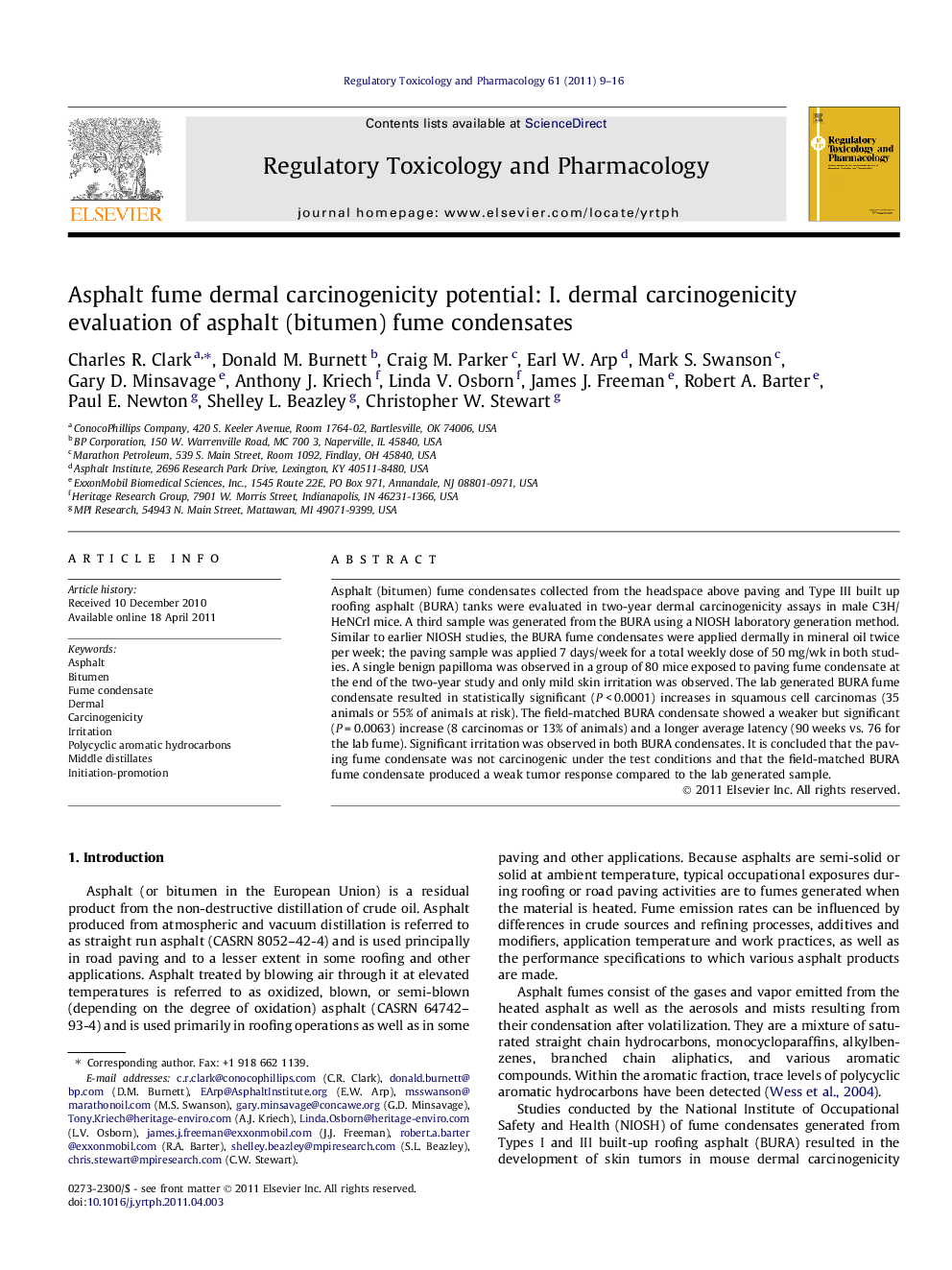| Article ID | Journal | Published Year | Pages | File Type |
|---|---|---|---|---|
| 2592320 | Regulatory Toxicology and Pharmacology | 2011 | 8 Pages |
Asphalt (bitumen) fume condensates collected from the headspace above paving and Type III built up roofing asphalt (BURA) tanks were evaluated in two-year dermal carcinogenicity assays in male C3H/HeNCrl mice. A third sample was generated from the BURA using a NIOSH laboratory generation method. Similar to earlier NIOSH studies, the BURA fume condensates were applied dermally in mineral oil twice per week; the paving sample was applied 7 days/week for a total weekly dose of 50 mg/wk in both studies. A single benign papilloma was observed in a group of 80 mice exposed to paving fume condensate at the end of the two-year study and only mild skin irritation was observed. The lab generated BURA fume condensate resulted in statistically significant (P < 0.0001) increases in squamous cell carcinomas (35 animals or 55% of animals at risk). The field-matched BURA condensate showed a weaker but significant (P = 0.0063) increase (8 carcinomas or 13% of animals) and a longer average latency (90 weeks vs. 76 for the lab fume). Significant irritation was observed in both BURA condensates. It is concluded that the paving fume condensate was not carcinogenic under the test conditions and that the field-matched BURA fume condensate produced a weak tumor response compared to the lab generated sample.
► Field matched fume condensates from paving and (oxidized) Type III built up roofing asphalts (BURA) were evaluated in mouse dermal carcinogenicity assays. ► A third sample was generated from the BURA using a NIOSH laboratory generation method. ► The paving fume condensate produced a single benign tumor and was not carcinogenic under the test conditions. ► The lab generated fume resulted in a significantly greater tumor response than the field-matched fume (55 versus 13%). ► Dermal carcinogenicity was correlated with mutagenicity and polycyclic aromatic hydrocarbon content of the samples.
